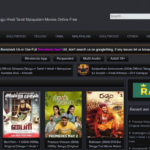How Process Analytics Drives Informed Decision-Making
- 1 The Role of Process Analytics in Decision-Making
- 2 Leveraging Data for Informed Decision-Making
- 3 Key Metrics for Process Analytics and Decision-Making
- 4 Driving Operational Efficiency With Process Analytics
- 5 Unlocking Insights Through Process Analytics
- 6 Case Studies: How Process Analytics Transformed Decision-Making
- 6.1 Case Study 1: Streamlining Operations
- 6.2 Case Study 2: Enhancing Customer Experience
- 6.3 Case Study 3: Optimizing Supply Chain
- 7 Conclusion
Are you tired of making decisions in the dark? Process analytics is here to shed light on the path to informed decision-making.
By leveraging data and unlocking insights, you can drive operational efficiency and transform your decision-making process.
In this article, we will explore the role of process analytics in driving informed decision-making and showcase real-life case studies that demonstrate its transformative power.
Get ready to make smarter, data-driven decisions and take your business to new heights.
The Role of Process Analytics in Decision-Making
When it comes to making informed decisions, process analytics plays a crucial role in providing you with valuable insights. The role of data analysis in decision-making can’t be underestimated.
By analyzing large sets of data, process analytics helps you identify patterns, trends, and correlations that may not be immediately obvious. These insights enable you to make informed and data-driven decisions, rather than relying solely on intuition or guesswork.
The benefits of process analytics in decision-making are numerous. Firstly, it allows you to identify bottlenecks or inefficiencies in your processes, helping you streamline operations and improve productivity.
Secondly, it helps you forecast future outcomes based on historical data, allowing you to anticipate and prepare for potential challenges or opportunities.
Ultimately, process analytics empowers you to make well-informed decisions that drive success and growth.
Leveraging Data for Informed Decision-Making
You can leverage data to make informed decisions by analyzing and interpreting the insights provided by process analytics. By adopting a data-driven decision-making approach, you can unlock valuable information that can guide your business strategies and improve productivity.
Here are three ways you can harness the power of data for informed decision-making:
- Identify patterns and trends: Analyzing data collected through process analytics can help you identify patterns and trends in your operations. This information can guide you in making informed decisions to optimize your processes and improve productivity.
- Predictive analytics: By leveraging data, you can use predictive analytics to forecast future outcomes and make proactive decisions. This can help you anticipate challenges, optimize resource allocation, and improve overall productivity.
- Real-time monitoring: Process analytics provides real-time visibility into your operations, allowing you to monitor key performance indicators and make data-driven decisions on the spot. This can help you identify bottlenecks, address issues promptly, and enhance productivity in real-time.
Key Metrics for Process Analytics and Decision-Making
As you analyze process analytics, you can identify key metrics that provide valuable insights for informed decision-making.
Two important metrics to consider are performance optimization and predictive modeling.
Performance optimization involves measuring and analyzing the efficiency of your processes to identify areas where improvements can be made. By monitoring metrics such as cycle time, throughput, and resource utilization, you can identify bottlenecks and streamline your operations for better overall performance.
Predictive modeling, on the other hand, uses historical data and statistical algorithms to forecast future outcomes. By analyzing patterns and trends, you can make informed decisions based on the predicted outcomes. Predictive modeling can help you anticipate customer demand, optimize inventory levels, and make accurate financial projections.
Driving Operational Efficiency With Process Analytics

Improve operational efficiency by leveraging process analytics. By analyzing your organization’s processes, you can identify areas for improvement and make data-driven decisions to drive productivity and optimize workflows.
Here are three ways process analytics can help improve operational efficiency:
- Identifying bottlenecks: Process analytics enables you to pinpoint bottlenecks in your workflows, allowing you to address them and streamline operations for smoother and faster processes.
- Automating repetitive tasks: By analyzing processes, you can identify repetitive tasks that can be automated, freeing up time for your employees to focus on more value-added activities.
- Predicting and preventing delays: Process analytics can help you predict potential delays and take proactive measures to prevent them, ensuring that your operations run smoothly and efficiently.
Unlocking Insights Through Process Analytics
By utilizing process analytics, you can uncover valuable insights that can inform your decision-making process. Data analysis plays a crucial role in this aspect, as it involves examining large sets of data to identify patterns, trends, and anomalies.
Through data analysis, you can gain a deeper understanding of your processes and identify areas for improvement or optimization. Additionally, predictive modeling can help you forecast future outcomes based on historical data.
Case Studies: How Process Analytics Transformed Decision-Making
You can see firsthand how process analytics transformed decision-making through these case studies. Real time monitoring and predictive modeling are two key aspects that have played a significant role in this transformation.
Case Study 1: Streamlining Operations
- Real-time monitoring allowed a manufacturing company to identify bottlenecks in their production line, leading to proactive adjustments and improved efficiency.
- Predictive modeling helped them forecast demand patterns, enabling better inventory management and reducing costs.
Case Study 2: Enhancing Customer Experience
- A retail company used real-time monitoring to track customer interactions across various channels, gaining valuable insights into their preferences and behavior.
- By leveraging predictive modeling, they were able to personalize offers and recommendations, resulting in increased customer satisfaction and loyalty.
Case Study 3: Optimizing Supply Chain
- Real-time monitoring of supply chain data enabled a logistics company to identify potential disruptions and take proactive measures to mitigate them.
- Predictive modeling helped them optimize routes and plan shipments more efficiently, leading to cost savings and improved delivery times.
These case studies highlight how process analytics, with its real-time monitoring and predictive modeling capabilities, can significantly transform decision-making across industries.
Conclusion
As you dive deeper into the world of process analytics, you unlock a hidden treasure trove of insights. Like a compass guiding you through uncharted waters, process analytics empowers you to make informed decisions that drive operational efficiency.
By leveraging data and key metrics, you uncover the secrets that transform decision-making. So, embrace the power of process analytics and watch as it transforms your organization, leading you to new horizons of success.


















